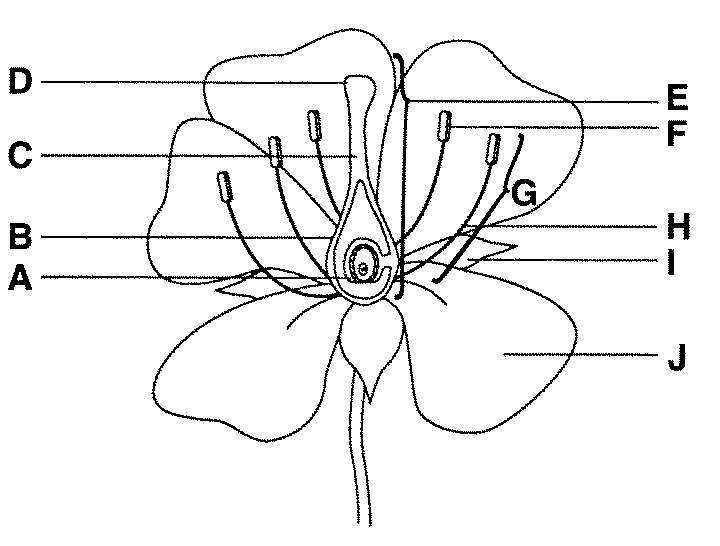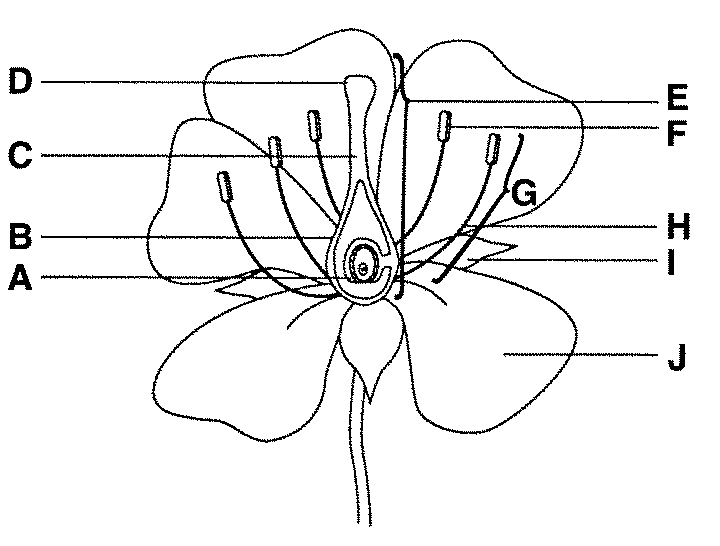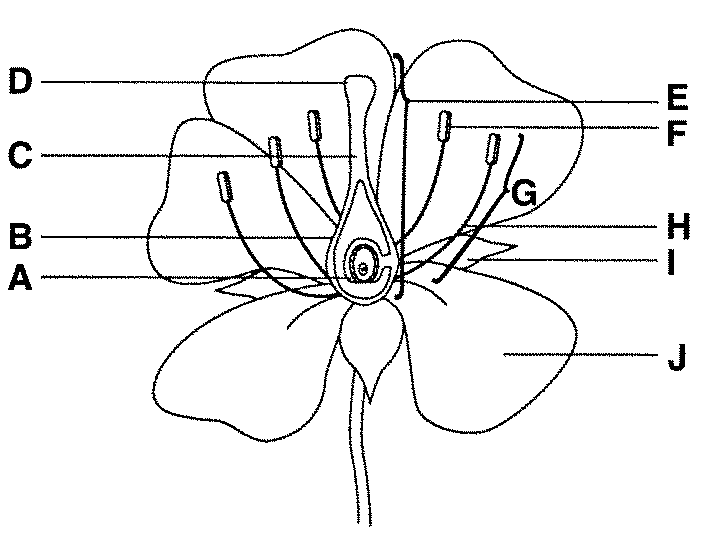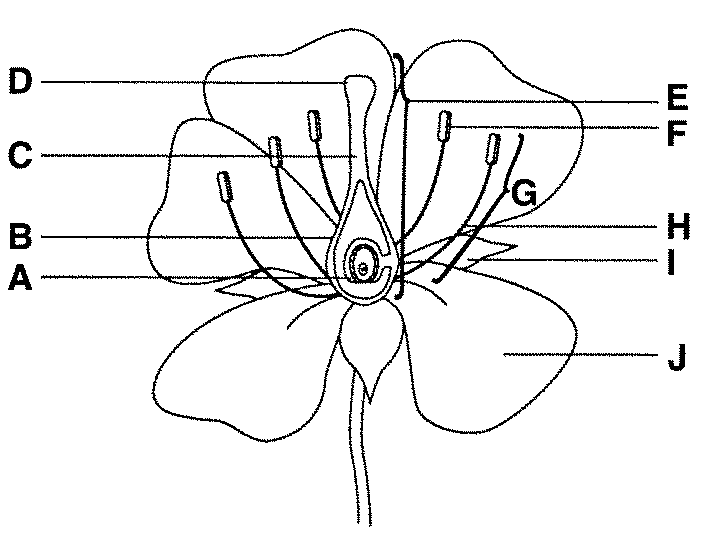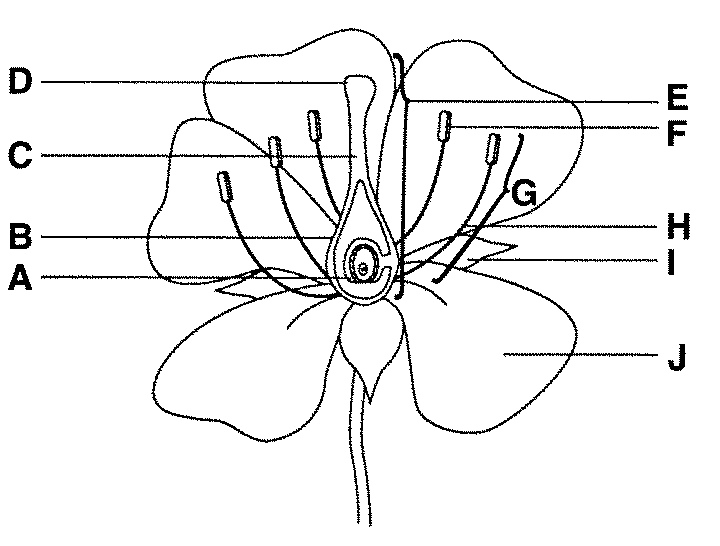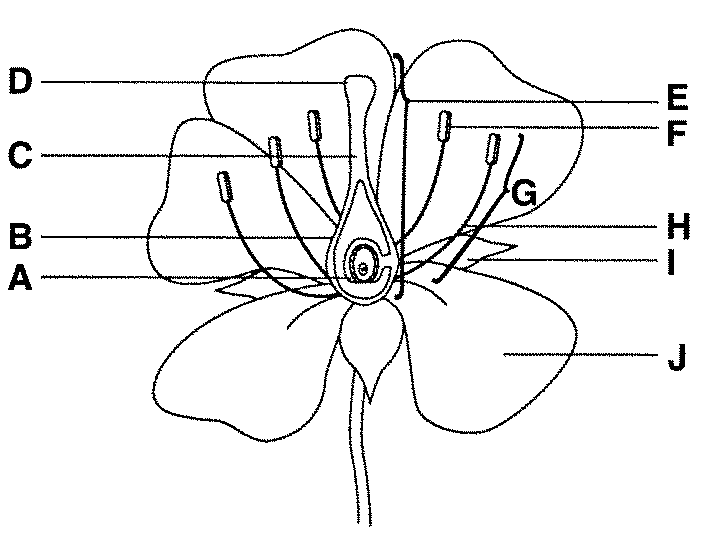Parts Of A Flower Quiz Questions And Answers
(119).jpg)
Welcome to a whole new angiosperms quiz. Test your knowledge with these parts of a flower quiz that is here for you. You have to label the right parts of the flower. By the end of the quiz, you will have your scorecard, so let's see how much flower anatomy knowledge you carry. So, are you ready for this test, and can you score more than 70 on this quiz? Let us see!
- 1.
Word Bank: Stamen, Filament, Anther, Stigma, Style, Ovary, Ovule, and Sepal Identify B
Explanation
The ovary is the female reproductive organ in plants that contains the ovules. It is responsible for producing and protecting the ovules, which eventually develop into seeds after fertilization. The ovary is located at the base of the flower and is typically swollen and rounded in shape. It plays a crucial role in the process of pollination and fertilization, ensuring the successful reproduction of the plant.Rate this question:
- 2.
Word Bank: Stamen, Filament, Anther, Stigma, Style, Ovary, Ovule, and Sepal Identify C
Explanation
The correct answer is "Style, Styles." The style is a part of the flower's reproductive structure that connects the stigma to the ovary. It is a long, slender tube-like structure that allows pollen to travel from the stigma to the ovary. In some flowers, there may be multiple styles present, which are collectively referred to as "styles."Rate this question:
- 3.
Word Bank: Stamen, Filament, Anther, Stigma, Style, Ovary, Ovule, and Sepal Identify D
Explanation
The correct answer is "Stigma, stigmas." The stigma is the receptive part of the female reproductive system in a flower, where pollen is deposited and germination occurs. It is typically located at the top of the pistil. The plural form of stigma is stigmas.Rate this question:
- 4.
Word Bank: Stamen, Filament, Anther, Stigma, Style, Ovary, Carpel, Pistil, Ovule, and Sepal Identify E (Write only one answer)
Explanation
The correct answer is "Carpel or Pistil." Both carpel and pistil serve as the female reproductive organs in a flower. A carpel comprises components such as the ovary, stigma, and style, while the pistil can be composed of multiple carpels or a single carpel.Rate this question:
- 5.
Word Bank: Stamen, Filament, Anther, Stigma, Style, Ovary, Ovule, and Sepal Identify F
Explanation
The correct answer is "Anther, Anthers." The anther is the part of the flower's reproductive system that produces and holds the pollen. It is usually located at the top of the filament, which is the stalk-like structure that supports the anther. The anthers are responsible for the release of pollen, which is necessary for fertilization.Rate this question:
- 6.
Word Bank: Stamen, Filament, Anther, Stigma, Style, Ovary, Ovule, and Sepal Identify G
Explanation
The correct answer is "Stamen, Stamens". In botany, the stamen is the male reproductive part of a flower, consisting of the filament and the anther. The filament is a slender stalk that supports the anther, which is responsible for producing and releasing pollen. "Stamens" is the plural form of "stamen".Rate this question:
- 7.
Word Bank: Stamen, Filament, Anther, Stigma, Style, Ovary, Ovule, and Sepal Identify H
Explanation
The correct answer is "Filament, Filaments" because the question asks to identify the letter "H" from the given word bank. None of the other options contain the letter "H".Rate this question:
- 8.
Word Bank: Stamen, Filament, Anther, Stigma, Style, Ovary, Ovule, and Sepal Identify I
Explanation
The correct answer is "Sepal, Sepals". Sepals are the outermost part of a flower, typically green in color, and they protect the developing flower bud. They are usually found in a ring-like structure at the base of the flower. Sepals are sometimes referred to as "calyx" collectively.Rate this question:
- 9.
Word Bank: Stamen, Filament, Anther, Stigma, Style, Ovary, Petal, Ovule, and Sepal Identify J
Explanation
The correct answer is "Petal, Petals". Petals are the colorful, leaf-like structures of a flower that are often responsible for attracting pollinators. They are usually found in multiples and are located just inside the sepals, which are the outermost protective structures of a flower. Together, the petals and sepals form the perianth, which surrounds and protects the reproductive parts of the flower.Rate this question:
- 10.
Which Labeled structure in the above figure is most likely to be brightly colored?Word Bank: Stamen, Filament, Anther, Stigma, Style, Ovary, Ovule, and Sepal, Petal
Explanation
Petals are the most likely labeled structure to be brightly colored in the figure. Petals are often brightly colored to attract pollinators such as bees, butterflies, and birds. The vibrant colors of petals help in attracting these pollinators towards the flower, increasing the chances of successful pollination. Bright colors also serve as a visual cue for pollinators to locate the flower easily. Therefore, the petals being brightly colored is a common adaptation in many flowering plants.Rate this question:
Quiz Review Timeline +
Our quizzes are rigorously reviewed, monitored and continuously updated by our expert board to maintain accuracy, relevance, and timeliness.
-
Current Version
-
Oct 18, 2024Quiz Edited by
ProProfs Editorial Team -
Apr 19, 2010Quiz Created by
Semeier
 Back to top
Back to top



(121).jpg)
(119).jpg)
(112).jpg)
